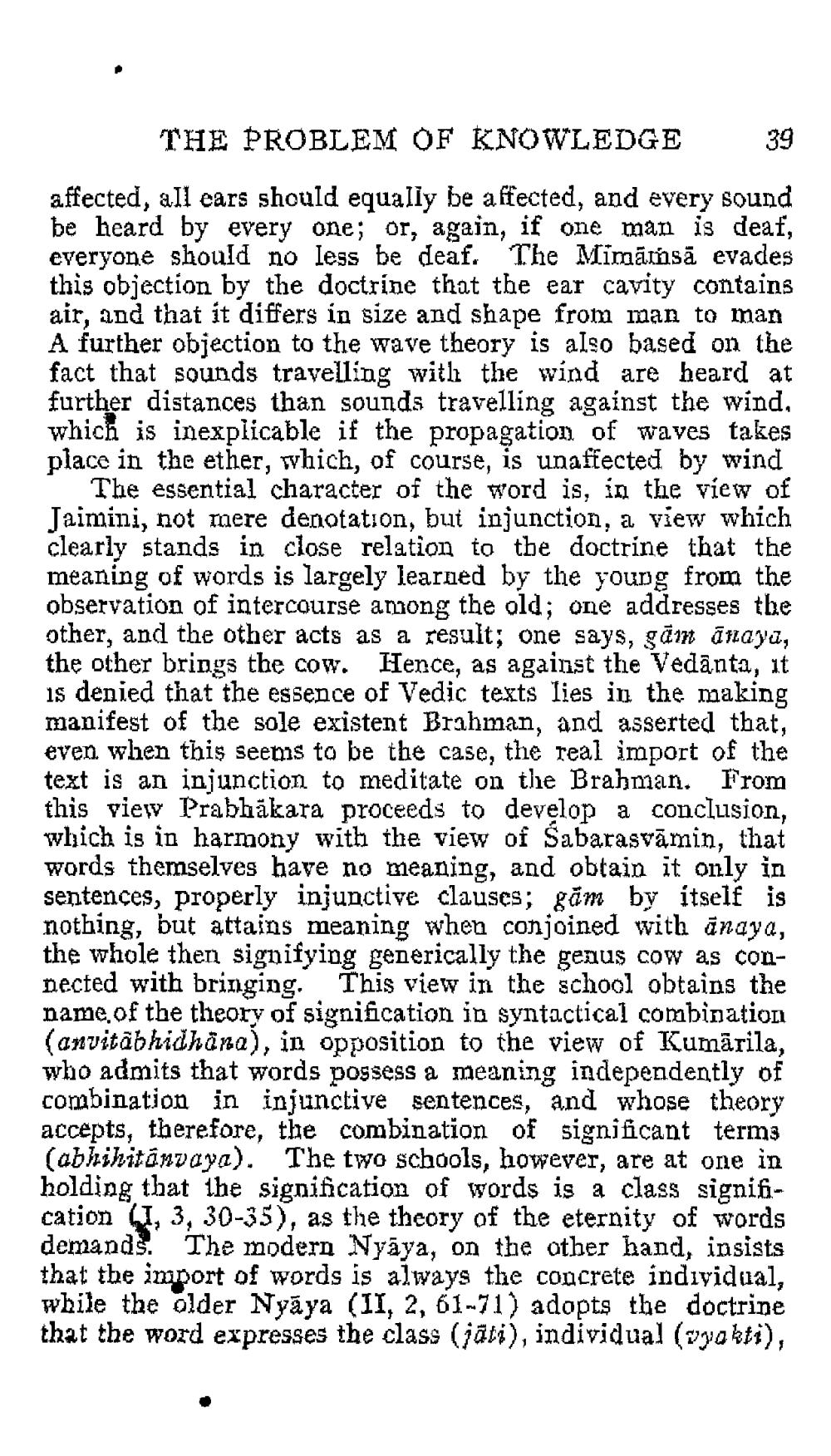________________
THE PROBLEM OF KNOWLEDGE
39
affected, all ears should equally be affected, and every sound be heard by every one; or, again, if one man is deaf, everyone should no less be deaf. The Mimārnsă evades this objection by the doctrine that the ear cavity contains air, and that it differs in size and shape from man to man A further objection to the wave theory is also based on the fact that sounds travelling with the wind are heard at further distances than sounds travelling against the wind, which is inexplicable if the propagation of waves takes place in the ether, which, of course, is unaffected by wind
The essential character of the word is, in the view of Jaimini, not mere denotation, but injunction, a view which clearly stands in close relation to the doctrine that the meaning of words is largely learned by the young from the observation of intercourse among the old; one addresses the other, and the other acts as a result; one says, gām araya, the other brings the cow. Hence, as against the Vedanta, at is denied that the essence of Vedic texts lies in the making manifest of the sole existent Brahman, and asserted that, even when this seems to be the case, the real import of the text is an injunction to meditate on the Brahman. From this view Prabhākara proceeds to develop a conclusion, which is in harmony with the view of Sabarasvāmin, that words themselves have no meaning, and obtain it only in sentences, properly injunctive clauses; găm by itself is nothing, but attains meaning when conjoined with anaya, the whole then signifying generically the genus cow as connected with bringing. This view in the school obtains the name of the theory of signification in syntactical combination (anvitâbhidhana), in opposition to the view of Kumārila, who admits that words possess a meaning independently of combination in injunctive sentences, and whose theory accepts, therefore, the combination of significant terms (abhihitandaya). The two schools, however, are at one in holding that the signification of words is a class signification (1, 3, 30-35), as the theory of the eternity of words demands. The modern Nyāya, on the other hand, insists that the import of words is always the concrete individual, while the older Nyāya (II, 2, 61-71) adopts the doctrine that the word expresses the class (jabi), individual (yokti),




